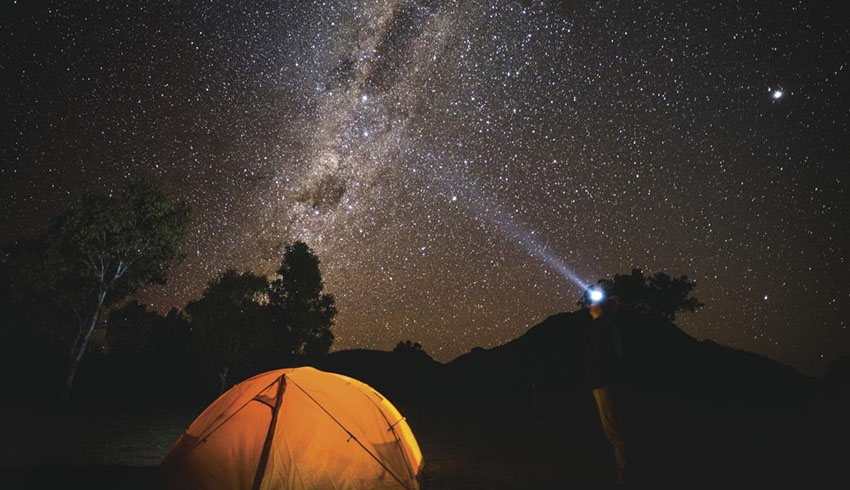Astrophysicist Dr Natasha Hurley-Walker, from the Curtin University node of the International Centre for Radio Astronomy Research (ICRAR), created the images using the Pawsey Supercomputing Centre in Perth.
"This new view captures low-frequency radio emission from our galaxy, looking both in fine detail and at larger structures," she said.
"Our images are looking directly at the middle of the Milky Way, towards a region astronomers call the Galactic Centre."
The data for the research comes from the GaLactic and Extragalactic All-sky MWA survey – GLEAM for short.
The MWA is located in Western Australia, 800 kilometres north of Perth, and comprises 128 tiles, each with 16 radio antennae to receive signals from space.
This a forerunner to the world's largest radio telescope, the Square Kilometre Array, which is due to be built in Australia and South Africa from 2021.
The MWA maps the sky using radio waves at frequencies between 72 and 231 MHz. The FM radio band is near 100 MHz.
"It's the power of this wide frequency range that makes it possible for us to disentangle different overlapping objects as we look toward the complexity of the Galactic Centre," Dr Hurley-Walker said.
"Essentially, different objects have different 'radio colours', so we can use them to work out what kind of physics is at play."
Using the images, Dr Hurley-Walker and her colleagues discovered the remnants of 27 massive stars that exploded in supernovae at the end of their lives.
These stars would have been eight or more times more massive than our sun before their dramatic destruction thousands of years ago.
Younger and closer supernova remnants, or those in very dense environments, are easy to spot, and 295 are already known.
Unlike other instruments, the MWA can find those which are older, further away, or in very empty environments.
Dr Hurley-Walker said one of the newly-discovered supernova remnants lies an empty region far from galaxy plane. Despite being quite young, it is also very faint.
"It's the remains of a star that died less than 9,000 years ago, meaning the explosion could have been visible to Indigenous people across Australia at that time," she said.
Associate professor Duane Hamacher from the University of Melbourne, an expert in cultural astronomy, said some Aboriginal traditions did describe bright new stars appearing in the sky.
But we don't know of any definitive traditions describing this particular event, he said.
"However, now that we know when and where this supernova appeared in the sky, we can collaborate with Indigenous elders to see if any of their traditions describe this cosmic event. If any exist, it would be extremely exciting," Hamacher said.
Dr Hurley-Walker said two of the supernova remnants discovered are quite unusual orphans, found in a region of sky where there are no massive stars, which means future searches across other such regions might be more successful than astronomers expected.
Other supernova remnants discovered in the research are very old, she said.
"This is really exciting for us, because it's hard to find supernova remnants in this phase of life – they allow us to look further back in time in the Milky Way," Dr Hurley-Walker said.

